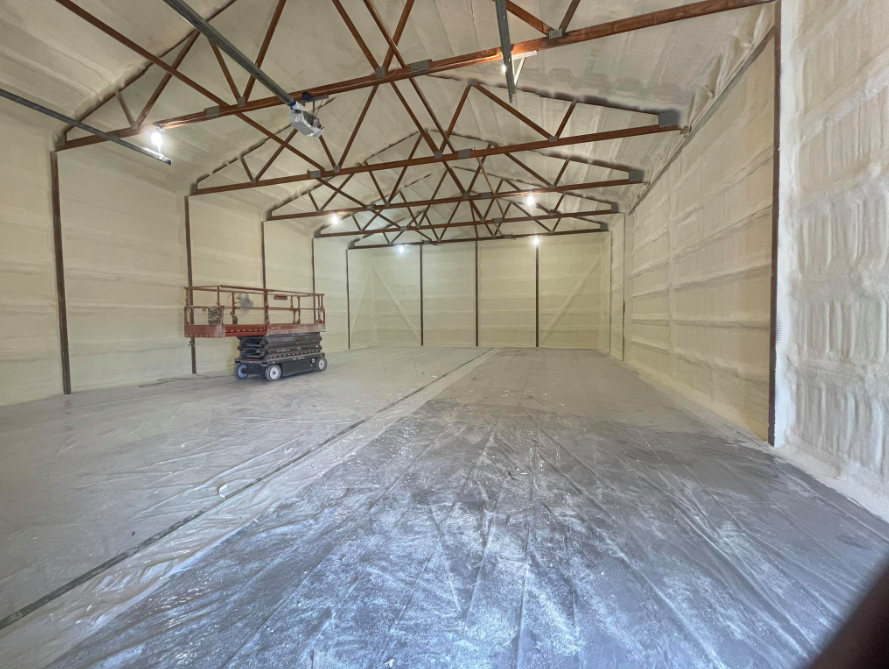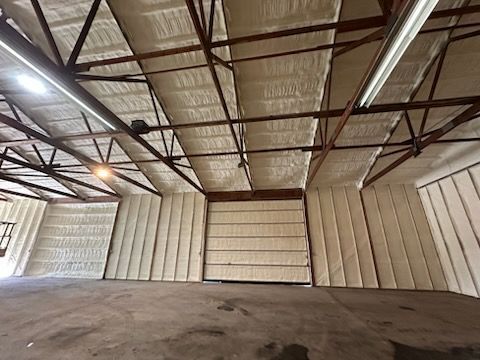Closed-Cell Spray Foam Stops Condensation | Danner Spray Foam
Karen Danner • November 15, 2025
How Closed-Cell Spray Foam Stops Drips at the Source
Why foam works (the physics made simple)
Closed-cell spray foam adds a thermal break and air seal directly on the metal, keeping the interior surface warmer—above the dew point. If the surface doesn’t cross the dew point, condensation can’t form.
Benefits at a glance
- No more drip lines: Warmer interior surface = no “sweat.”
- Air + moisture control: Dense, closed cells block air movement and resist bulk moisture.
- Strength & durability: Adheres to metal, adds rigidity, holds up to daily barn/shop use.
- Targeted, not wasteful: Often roof undersides, eaves, and transitions deliver most of the win.
A cost-smart plan (smallest fix first)
- Seal obvious leaks and tidy moisture sources.
- Vent smart and verify with a hygrometer.
- Target foam where it pays: start with the roof underside, eave/transition areas, and known cold spots; add walls if comfort/heating is a goal.
- Re-check after a temp swing: Confirm drips are gone; fine-tune if needed.
FAQ highlights
Do I have to foam everything?
Not always. Many buildings improve dramatically by
foaming the roof underside and trouble zones.
What thickness do I need?
Depends on goals (condensation control vs. full comfort) and whether you’ll
heat the space. We’ll recommend a spec that fits your use and budget.
Will foam “trap” moisture?
Foam
reduces moisture problems by
warming the surface and
stopping air leaks. Pair with reasonable ventilation for best results.
What a typical install looks like
- Walk-through, photos, and measurements
- Prep & protection; confirm clean, dry metal for adhesion
- Apply closed-cell foam to targeted areas; trim neat
- Quick humidity/comfort check after the next temp swing



